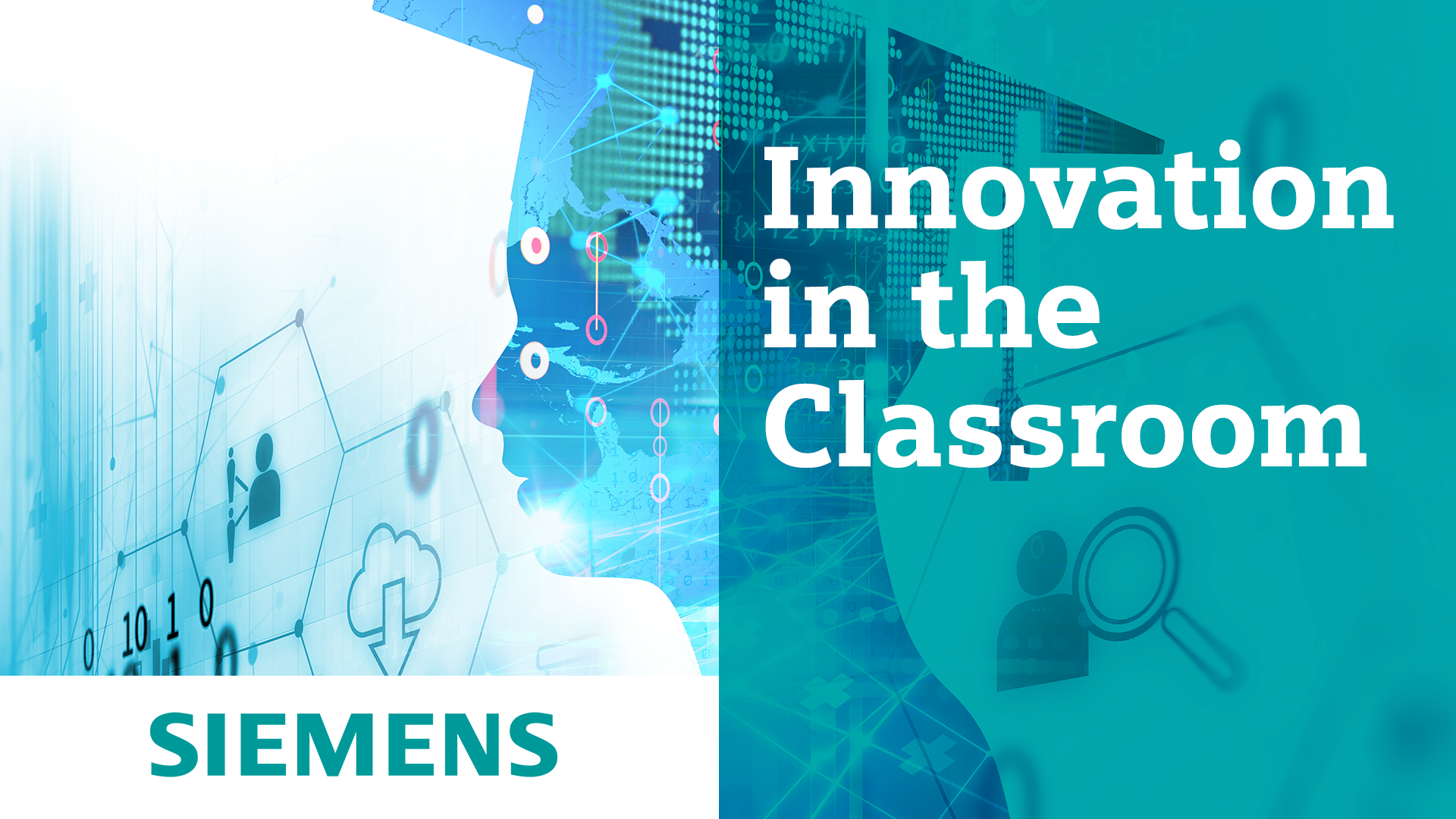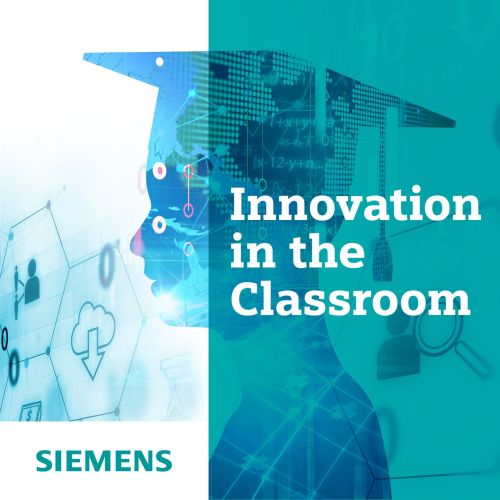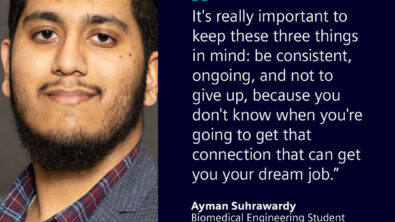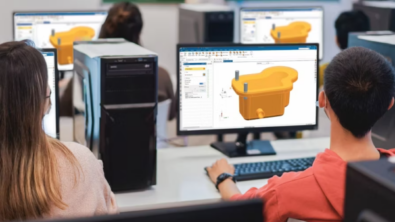Podcast Transcript: Everything New Under the Sun

Researchers, scientists, engineers, and other professionals work daily to generate vehicles moved by green, renewable energy. The Agoria Solar Team is pushing the limits of solar mobility with a goal to one day transform our understanding of what a solar-powered car can do.
In this episode, host Christina DePinto sits down with Frederik Vanmaele and Gilles De Baets, both members of the Belgian Agoria Solar Team. Looking to put their degrees into action a group of Belgian engineers created the first Agoria solar car over 16 years ago. Since then, the team has carried on the tradition and even garnered international success. The team won the Bridgestone World Solar Challenge in Australia in 2019 and the iLumen European Solar Challenge in 2020.
Listen as Frederik and Gilles walk through the process of innovating solar cars, from the communication needed to attract investors to the basic understandings of 3D CAD modeling and how it can help engineers understand a vehicle before its existence. They also talked about the impact of using Siemens software and its benefits of simulation and the digital twin to the team.
Christina DePinto: Hello, everyone! Thank you for tuning in to another episode of Innovation in the Classroom. My name is Christina DePinto, and I’m a Marketing & Communications intern on the Siemens Global Academic Partner Program team, and your host for today’s podcast. Today, I’m joined by a few special guests from the Agoria Solar Team. The Agoria Solar Team is a team of Belgian engineering students competing to build the most innovative and efficient solar car. Throughout the years, the team has had great success in international competitions. Some recent highlights include winning first place in the Bridgestone World Solar Challenge in Australia in 2019, and then first place in the iLumen European Solar Challenge in 2020. Thank you all so much for joining me today. I’m so excited that you’re here. And to start out, I would love for you to introduce yourself and talk a little bit about what you do for the team.
Gilles De Baets: Yeah, great. Thanks for the introduction. I’ll start. I’m Gilles and I’m an aerodynamic engineer for the Solar Team. So, that basically means that I’m in charge of creating the outer shape of our solar car, and designing it so that it has the most aerodynamic shape possible.
Frederik Vanmaele: Well, thank you for having us. My name is Frederik, and I’m the race strategist of the Agoria Solar Team. My task includes defining the best strategy for the team during the races and also preparing the team to compete against the other teams.
Christina DePinto: That’s great. Well, thank you so much, again, for joining us today. For our listeners who may not be familiar with the solar car, or with the Agoria Solar Team, let’s just start from the basics. How is your team set up? And can you walk me through your team’s process of designing and then building your car?
Gilles De Baets: Yeah. So, to give a basic description of how our team is set up, and how a solar car works – well, a solar car, as the name says, is a car that drives on solar energy. But to make that happen, a lot of different aspects are needed and our team is basically divided into three big groups. That’s the mechanics department that does all the, for example, the suspension units, the outside body of the car. Then, next to that we have the energy department and they make sure that we have the best solar panel possible, we also have a battery and we have all the components to connect everything with each other and to drive the car. And lastly, we have the marketing department and the marketing department basically makes sure that we have all the correct partners and the correct sponsors to make this happen. Because, of course, it’s not a cheap project. It costs quite a lot of money and we need a lot of partner companies that can provide us with software, but also with, for example, some physical parts of the suspension, but also some electronic components and so on. And basically, the marketing department makes sure that we have all those connections to make that happen.
Gilles De Baets: To maybe give an overview of how the solar car process starts and how we basically start from nothing and we create this very high-tech solar car. So, we start by, firstly, everybody gets acquainted with their position. So you try to learn every program that you need in order to create – for example, to draw a car in a 3D environment or to simulate how much power is coming into certain areas of the solar panel and so on. So, during the first month of the project, we usually are busy learning everything. And although we all have an engineering degree and an engineering background, we still have to learn specific things because a solar car is such a specific object that a lot of knowledge has gone into it the previous years, and you have to learn it in a very short amount of time. And I think that’s really the first part of the entire process.
Christina DePinto: That’s awesome. Thank you for that great overview. You mentioned learning new things that were kind of outside of your engineering focus in school. Can you talk a little bit more about what was new that you had to learn? And, you know, what was challenging?
Frederik Vanmaele: Well, I think, first of all, it isn’t as much totally new. It’s just that most of the things that we learn in solar cars are things that we have seen during our studies, but only very briefly or not really in-depth. And then, there’s an environment behind the solar car that is like the climax of Applied Engineering. So, that’s mainly what we have been doing the first two to three months, is just trying to grasp the idea of this very applied engineering project – so the solar car that was built by the previous team – and also tried to, let’s say, connect it with the concepts that we have learned during our studies but that weren’t discussed as much in detail.
Christina DePinto: What was that like to kind of transfer your theoretical knowledge that you’ve learned in your studies to this real-world scenario, to build this car that is going to be competing on this international stage? Was that hard to do? How was your engineering kind of degree setup? Was there a lot of hands-on learning or how did that work?
Frederik Vanmaele: Well, at least in my case, there wasn’t. But also, as a race engineer, I’m not the guy who will be working on the product the most. So, there isn’t really a problem. But I think we had a very steep learning curve and most of it was because of our team of alumni who really helped us during the first weeks and months, and are still helping us today to understand every tiny part of the car.
Gilles De Baets: Yeah, maybe from my side, I do the aerodynamics of the car and I have a degree in aerospace engineering. So, I had already seen some of the theory behind how you can do aerodynamic simulations, for example. But that’s always very confined to a very, for example, a very easy and specific analysis of, for example, a wing, and then you can see it in some labs. But why I really wanted to join the Solar Team and what seemed really interesting to me, is actually that very much applied use, really having the possibility of learning how one should do hundreds of simulations of a single object and constantly changing it and constantly trying new things. And by having to do that, you kind of learn how it is in real life. And although lab sessions can kind of prepare you for that, it’s not really 100% the reality and I think that something like the learning curve that we have in the Solar Team is so unique, that you get to learn so much in so little time and that it’s very much relevant to the future, and what you can do in real life, let’s say.
Christina DePinto: So, you talked a little bit about the learning curve. Was that anywhere in the CAD modeling software, when you’re running simulations? What was that like? And what was that like to really use software to create a project and create something that’s real and not just something in the hypothetical?
Gilles De Baets: Yeah, you know, using software is something that you start off learning really early in the engineering degree, because, of course, you try really basic – try modeling, for example, really basic objects. And, yeah, that basic knowledge is something that was really useful in the beginning. When you start further learning in the Solar Team how to create a solar car, knowing the basics is really essential to make the path easier to do these complex structures. And when you know the basics, you’re really a step ahead, because then somebody else – for example, one of our alumni – can explain how they usually work and how, for example, the outer body of a solar car is constructed. And those are usually really new things because it’s something really specific creating certain types of surfaces and so on. However, by already knowing kind of the basics of 3D modeling, yeah, it’s quite intuitive to go with the flow from that and I think that’s something that’s really useful. Also, with the other guys from the other departments, for example, the mechanical systems guys who look at the suspension and the steering unit, being able to work together in this 3D software is really easy because then you can check if everything fits in the car, for example, but also you can check how the car behaves in a certain corner or how it behaves with a certain wind gust. And basically, modeling everything in advance in 3D makes you get to know your car before it even exists. I think that’s a huge advantage.
Christina DePinto: Yeah, definitely. And having that, you don’t have to spend so much time really building it hands-on, you can really get everything you need using the software. So, you work with Siemens software as one of your technology partners. Can you talk a little bit about how the use of Siemens software has connected you not only to your team, but also to the industry? Because so many other companies are using our software and so, you’re getting this kind of experience that’s going to be useful later on.
Gilles De Baets: Like I said already, a good example of this is working together with different departments. So we all use Siemens software and because we all use it, it’s really useful for a number of cases. In the most basic sense of things, it’s useful if you don’t know how to do something, maybe somebody else knows how to do it because it’s the same program. But more importantly, it’s useful for corresponding every part to each other because there’s a lot of different aspects in a solar car, starting from really small PCB circuit boards, going up to the wheels and the wheel hubs and so on, to the entire outside body of the car, and all those parts have to fit into one – and that’s something that’s really useful that Siemens offers a good range of tools that we can do both structural analysis, designing of certain parts, and also simulating certain behaviors of the car. And it’s all basically in one package, which means that all the departments can use it and if there’s an update in a certain part, it gets instantly transferred to the other department so they can work with the updated and the newest parts. So, in that case, on a team level, it makes it really useful.
Gilles De Baets: And then, on the corporate level, I think Siemens is useful because, like you said, it’s used in a lot of companies and because it’s used in a lot of companies, we can get the specific expertise from those companies working with that software very easily because we work with the same software, and they can just simply explain something, how they do it, or send over a part or a structure or an assembly or anything inside that Siemens ecosystem, let’s call it, and then we can easily use it that way and there’s no converting or transferring anything, and nothing gets lost, and everything gets as up to date as it can be.
Christina DePinto: So kind of piggybacking off of that, you talked a little bit about kind of the career opportunities within this and how cool it is to really see something come together and work amongst a team. But what is the most rewarding thing about being a part of the Agoria Solar Team?
Frederik Vanmaele: Well, of course, there’s one big reward at the end of the project and that’s, of course, the race. But I think the path towards the race has been very rewarding up until now already because you’re in this project together with 19 other engineering students, who are all as motivated as you are. I think that’s something very rewarding. So, at the moment, we are all spending, I would say, at least a lot of time on this project and this gives a lot of fulfillment to come here every day – or to work from home, of course, at moment; but if we have to work on the car, we come to the workshop, of course – and to see other people who are also as motivated as you are to help achieve the best possible car.
Christina DePinto: Yeah. You mentioned working from home. I would love to hear how the pandemic has affected the team. I know it was recently announced that the World Solar Challenge, the 2021 competition in Australia, has been canceled. So, you know, what’s next for you guys? What are you working on now?
Frederik Vanmaele: Well, we have done a lot of research in the past few weeks and we have a lot of interests and options that we’re discussing with the other European teams so that we can really get together to still have a beautiful race. Because obviously we have designed our new car to be the most efficient as possible and we would love to showcase it to the world, but also to the other teams that we have effectively built the best solar car in the world. So basically, we’re looking at that. So, to go with the other European teams to a new challenge, I think that we are quite confident that we will find something in September or October to compete with the other teams.
Gilles De Baets: Yeah. And I think also maybe to add to that, although, of course, it wasn’t the nicest news to hear that the Solar Challenge that we were aiming for was canceled because of COVID-19, but I also think that it gives us an opportunity to really do something unique and to sit together with our competitors – something that we usually don’t do and now we sit together with them – to look at the options and the possibilities that we have next to what was normally planned. And I think that that’s something really cool. And yeah, with all the bad things regarding the pandemic, there are also some good things and I think that’s something really nice that has come out of it, that we get the opportunity to work together with all the different solar car teams who share the same passion, and that we can now look for different events.
Frederik Vanmaele: And obviously, the cancellation of the event was terrible news for us but I also think that the reaction of our team actually was really great to see. So, I think we got the news Wednesday evening and by Friday, everyone was just working again, on the project even though, at that time, we didn’t have any perspective for any other race, but just out of like, I would call it an engineering mindset that we still want to build a car that was as efficient as possible.
Christina DePinto: That’s a great silver lining that you can really come together with, engineers and, you know, the future industry and really make the best of the situation. So, that’s really great to hear. My last question is about you. What is next for you two? What are you hoping to do in your careers? The automotive industry is changing, you know, every day in the news is coming out that more companies are moving towards electric vehicles and alternative modes of transportation. So, where do you hope to go?
Frederik Vanmaele: Well, for me, personally, I just don’t know yet. So, at the moment, I will just finish my bachelor’s degree. So, after this project, I’ll still have to do three years of studying. And also, I think this project is kind of a way to figure out what I’ll do next. But at the moment, I’m still undecided whether it will be in the automotive industry or something else.
Gilles De Baets: Yeah, I think the same uncertainty is there for me. I’m not 100% sure yet what I want to do after this project. I have already graduated so after this project I’ll be looking for a job but I’m also not sure yet in which industry exactly. But I do know that by doing this project, you get to meet so many companies that usually are at the forefront of technology. So, we always try to push the boundaries with our solar car, and by doing that, we come into contact with the coolest companies that also want to push boundaries. And something that’s for sure that I want to do is work with or work towards, basically, a company that pushes these boundaries of technology to more efficient cars, planes, or something entirely else. I think we’re currently living in a time where there is a lot of opportunity to make a more sustainable future and a lot of companies are really invested in this. And my experience with the Solar Team has already shown me a lot of potential with a lot of companies and I think it will further do so. And yeah, I’m not sure yet exactly what I want to do but I do know that I want to join a company that’s also motivated and that’s also at the forefront of pushing boundaries and pushing technology towards more sustainability in whatever form that may come.
Christina DePinto: Yeah, I think sustainability is really going to be something that is going to affect all industries, all sectors – regardless of if you’re in STEM or engineering, it’s really going to be at the forefront of business. So, it’s so exciting to see that we have so many, you know, awesome and innovative people joining the automotive industry or the engineering industry, and can really make a difference and are already creating innovative things that are winning international competitions.
Gilles De Baets: Yeah.
Christina DePinto: Well, thank you so much for joining us for another episode of Innovation in the Classroom. If you enjoyed this podcast, be sure to subscribe and listen to more of our Innovation in the Classroom podcast series. Thank you so much for joining us today and thank you so much to our guests from the Agoria Solar Team. Have a great day.

Innovation in the Classroom
Innovation in the Classroom by Siemens explores best practices to empower the next generation of digital talent. In this podcast series, Dora Smith takes you through discussions with leading voices from the world of engineering education who are preparing future engineers in Academia 4.0 to shape the world of innovation.


